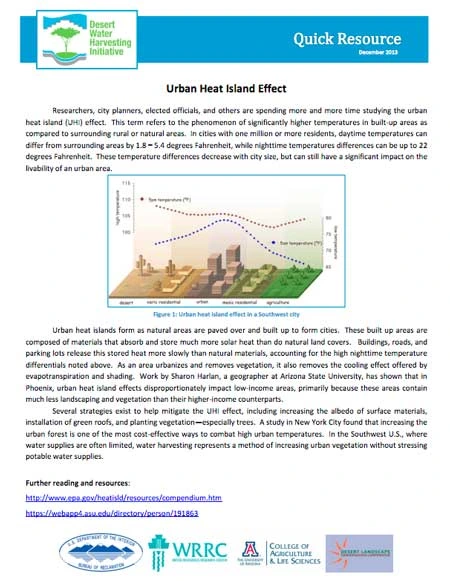December 01, 2013
Water Resources Research Center
,
Tucson, AZ

Researchers, city planners, elected officials, and others are spending more and more time studying the urban heat island (UHI) effect. This term refers to the phenomenon of significantly higher temperatures in built-up areas as compared to surrounding rural or natural areas. In cities with one million or more residents, daytime temperatures can differ from surrounding areas by 1.8 – 5.4 degrees Fahrenheit, while nighttime temperatures differences can be up to 22 degrees Fahrenheit. These temperature differences decrease with city size, but can still have a significant impact on the livability of an urban area.
Keywords: urban heat island effect, UHI, temperature, pavement, mitigate, trees

